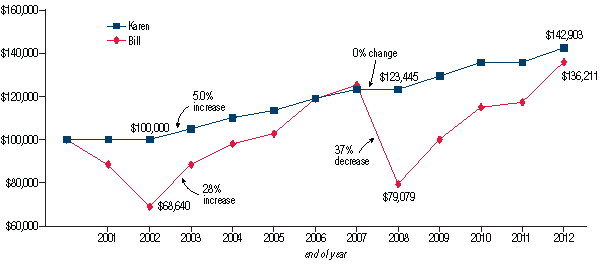A Basic Overview of Fixed versus Variable Annuities
Post on: 25 Июнь, 2016 No Comment

What is an annuity? An annuity is a contract, usually sold by an insurance company, that promises to make periodic payments for some period, such as life, or 20 years. Annuities can be deferred or immediate. Immediate annuities make payments the following month (or other agreed date) and require a large, one-time investment, such as $100,000. Deferred annuities start at some date in the future, such as at age 65 or 67, to coincide with retirement, for example, and provide more income to the annuitant (the one who receives the payments). Investors in deferred annuities make periodic investments to build up the large sum, after which the payments begin. This is a good way to finance the college education of a child or grandchild, for example. However, annuities are most often used for retirement plans.
What is the difference between a fixed annuity and a variable annuity? Fixed annuities pay the same amount each month, while variable annuities pay an amount that depends on the investment performance of the investments held by the particular annuity. Thus, a fixed annuity is like a defined benefit pension plan, such as Social Security, while a variable annuity is like a defined contribution pension plan, such as a 401k.
Why would you want an annuity? Tax-Advantaged Investing: Once funds are invested in an annuity (within a retirement plan, or not) growth of capital, dividends and interest are all tax deferred. Investments into annuities can be either tax deductible or non-tax deductible contributions depending on whether the annuity is within a retirement plan or not. Over a 25-year period, for example, growth of the capital invested can be astonishing! Tax Treatment of Payments: Payments from annuities are generally taxable, however, the tax rate depends on the origin of the funds. Distributions from annuities paid for by tax deductible contributions are fully taxable at the recipient’s then current income tax rate. Distributions from annuities paid for by non-tax deductible funds are subject to special treatment because some of the periodic payment is actually a return of capital invested and this is not taxable, just the interest or investment gain portion is taxable at the recipient’s then current income tax rate. Some penalty taxes may be due if payments go to someone less than age 59 or if someone over 70 takes less than the amount mandated by IRS. (For more on taxes, see IRS Publication 575)
Which is better Fixed or Variable? As always in finance, the answer is that it depends on the purchaser. The key decision variable is whether the annuitant needs or wants a fixed periodic payment. As a general rule, anyone under the age of 60, or anyone needing the tax deferral, should opt for a variable annuity. Generally speaking, only those who really need the fixed income should choose a fixed annuity. There is, however, an interesting investment strategy using a fixed annuity paid for with non-tax deductible funds in which the payments are invested in mutual funds. This is the subject of another article.
For expert help with your annuity call toll-free 866-866-1999














